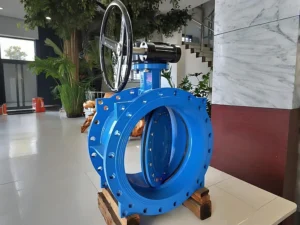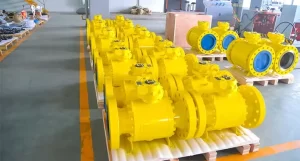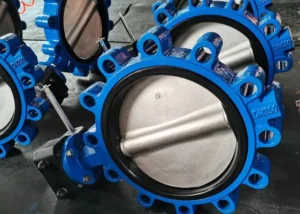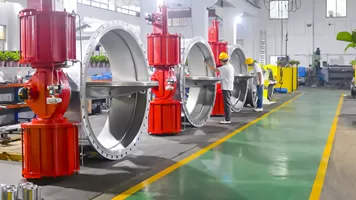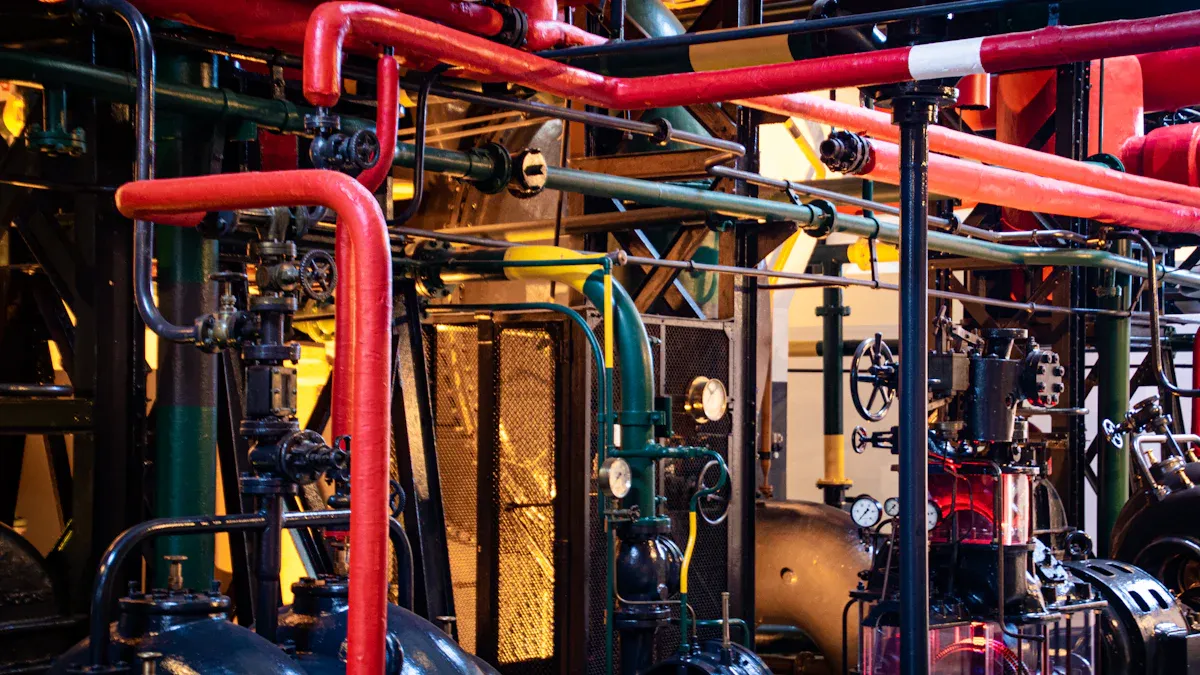
Choosing the right plug valve is important for plant safety. It also affects how well things work and how much they cost. Many industries use plug valves. These include oil and gas, chemicals, and water treatment. They need the right valve because media, pressure, and temperature can change a lot. The world market for industrial valves is now US$ 78.3 billion in 2024. More people want valves in areas that need easy sealing and isolation.
| Statistic Description | Value/Detail |
| Global industrial valve market size (2024) | US$ 78.3 billion |
| Lead time for certain valves | 16 to 18 weeks |
| Key industries driving plug valve demand | Oil & Gas, Chemicals, Pharmaceuticals, Power Generation, Water Treatment |
It takes a long time to get some valves. You need to pick the right plug valve to keep things running. This helps stop delays and meets tough industry rules.
Key Takeaways
- Pick plug valves that match your job, fluid, pressure, and heat. This helps keep things safe and working well.
- There are different plug valve types for each task. Lubricated ones handle high pressure. Non-lubricated ones are easy to clean. Some special ones seal tight or let fluid go different ways.
- Clean and check plug valves often. This stops leaks and keeps them from breaking.
- Plug valves are good for thick, dirty, or harsh fluids. They shut off fast and are easier to fix than other valves.
- Choose the right valve size, material, and actuator. This helps your system work well and follow the rules.
Plug Valve Types
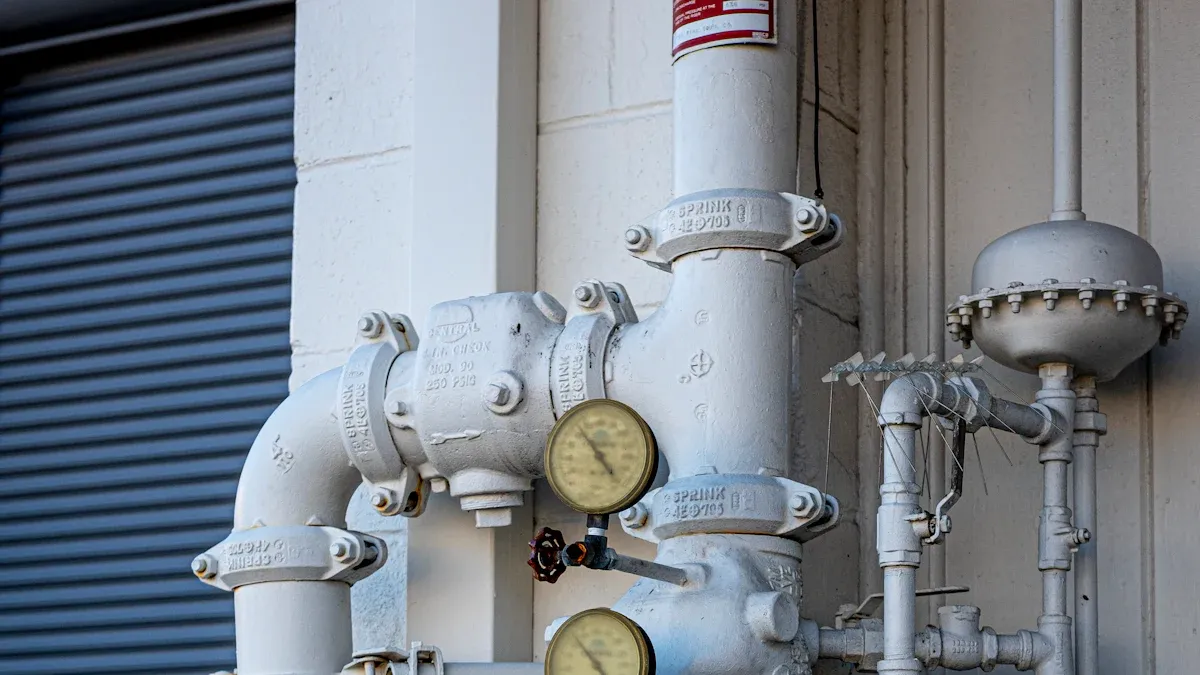
Lubricated and Non-Lubricated
Lubricated plug valves use grease or oil to help the plug move. This makes them good for high pressure and high heat. Non-lubricated plug valves have a sleeve or liner made from PTFE or other plastics. The sleeve helps seal the valve. These need less care and are best for clean or harsh places. People pick lubricated types for hard jobs. Non-lubricated types are easier to clean and need less force to turn.
Eccentric and Expanding
Eccentric plug valves have a plug that is not in the center. The plug moves away from the seat when it turns. This helps the valve last longer and makes it easier to use. Expanding plug valves have two parts that push out to seal tight. These work well with dirty or rough fluids. They are also used when no leaks are allowed.
Sleeved and Lined
Sleeved plug valves have a soft sleeve, often PTFE, around the plug. The sleeve helps stop leaks and fights rust. Lined plug valves have a lining inside, made from Teflon or rubber. This protects the valve from strong chemicals and rust.
Sleeve plug valves cost less and work up to 500 psi and 175°F. Lined valves are good for chemical plants and tough jobs.
Double Block and Bleed
Double block and bleed plug valves have two seals and a bleed port. The bleed port is between the seals. This lets workers check for leaks and drain fluid.
- Two seals stop leaks and keep flow apart.
- The bleed port helps test the seal and let out pressure.
- These valves make things safer and allow repairs without stopping everything.
Multi-Way and Special Designs
Multi-way plug valves can send flow in more than one way. They are used when you need to switch or mix flows. Some special types are full port, jacketed, and low-emission.
| Aspect | Plug Valves | Ball Valves |
| Customization | Multi-port sizes from 2 to 5 ports; actuator options available. | Multiple types and body designs; more versatile. |
| Structure | Full bore; lubricated and non-lubricated types. | Split, top-entry, end-entry, side-entry; more complex. |
| Sealing | Larger contact surface for better sealing. | Good sealing; varies by design. |
| Maintenance | Simple construction; easy cleaning; low-cost operation. | More complex; higher maintenance costs. |
| Efficiency Notes | High torque needed in high-pressure jobs. | Easier to automate and control. |
Multi-way and special plug valves help with automation and special needs.
Plug Valve Selection Criteria
Application and Industry
To pick the right plug valve, first know what your industry needs. Each industry has its own problems. Chemical plants need valves that do not rust. Mining needs valves that can handle rough slurries. Studies show that using the right valve lowers repairs and keeps people safe in mining. It also helps chemical plants work better. Power plants and city services need special valves to meet strict rules. Using the right valve for the job helps things run well and follow the rules.
Tip: Always check where the valve will be used and what rules you must follow.
Media and Fluid Properties
The kind of fluid in your system is very important. Plug valves are good for thick fluids and ones with bits in them. Their design helps clean the seal as they work. But they are not good for steam or very hot fluids. When picking a valve, think about how hot the fluid is. Also, check if it is thick or has pieces in it. Plug valves are often used for thick slurries or fluids with dirt. They keep a tight seal and do not get blocked easily.
- Temperature: Best for cooler fluids.
- Viscosity: Good for thick fluids.
- Suspended particles: Work well with solids because of the wiping action.
Pressure and Temperature
How much pressure and heat the valve faces matters a lot. Engineers must know the lowest and highest pressure and temperature. This includes times when cleaning or something goes wrong. Plug valves can handle many pressures. But the type and material must fit the job. Lubricated plug valves are best for high pressure and heat. Sleeved or lined types are better for lower pressure and cooler jobs.
Key Process Parameters:
- Find the lowest and highest flow rates.
- Check the pressure before and after the valve.
- Know the temperature range, even during cleaning.
- Look for risks like bubbles or sudden vapor.
Size and Flow
The right size valve gives the flow you need. It should not cause too much pressure drop. Engineers use Cv to match the valve to the flow and pipe size. Knowing pipe sizes like DN and NPS helps pick the right one. Valves work best between 10% and 80% of their top flow. Pick a valve with a Cv at least as big as the lowest needed.
| Valve Size (inches) | Typical Cv Range |
| 1/4 – 3/8 | 5.5 – 8 |
| 1 1/2 | Up to 120 |
Note: Always check Cv and pipe size so the valve is not too small or too big.
Material and Sealing
What the valve is made of affects how long it lasts and how well it seals. The fluid’s chemicals, heat, and roughness help you choose the right materials. For example, Stellite 6 coated plugs last much longer in mining slurries. PTFE sleeves stop germs in food and drug plants. Graphite sealants work well in oil and gas pipes. Good machining and double seals make things safer and stop leaks.
| Material/Seal Type | Application Area | Durability/Sealing Performance |
| Stellite 6 Coated Plugs | Mining slurries | 10x longer lifespan, 60% cost reduction |
| PTFE Sleeves (FDA-compliant) | Food, pharma | Zero contamination, FDA 21 CFR compliance |
| Graphite-Based Sealants | Oil/gas pipelines | Effective under sour gas, 50% cost reduction |
| Forged Steel Bodies | Power plants | 100,000+ cycle durability, 200% lifespan extension |
Cleaning and Maintenance
Food and drug plants must keep things very clean. They use clean-in-place systems after each batch or change. It is important to check for damage, leaks, and dirt often. Moving parts should be oiled as needed. Change old gaskets or seals right away. Keep good records and follow a schedule to find problems early and keep control.
- Clean valves after every batch or change.
- Check often for damage, leaks, or loose parts.
- Oil and test the valve.
- Change worn parts when needed.
- Write down all maintenance work.
Cleaning works best with enough time, movement, chemicals, and heat.
Actuation and Standards
The actuator can be manual, pneumatic, electric, or hydraulic. Pick the one that fits your needs and safety rules. Plug valves can be set up for remote control or left manual. Always make sure the valve and actuator meet the right standards like API, ANSI, or DIN. The way you mount and connect the valve also matters for how easy it is to install and how long it lasts.
- Pick actuator type for your control needs.
- Make sure it meets industry rules.
- Choose the right connection and mounting for your system.
Industry Applications
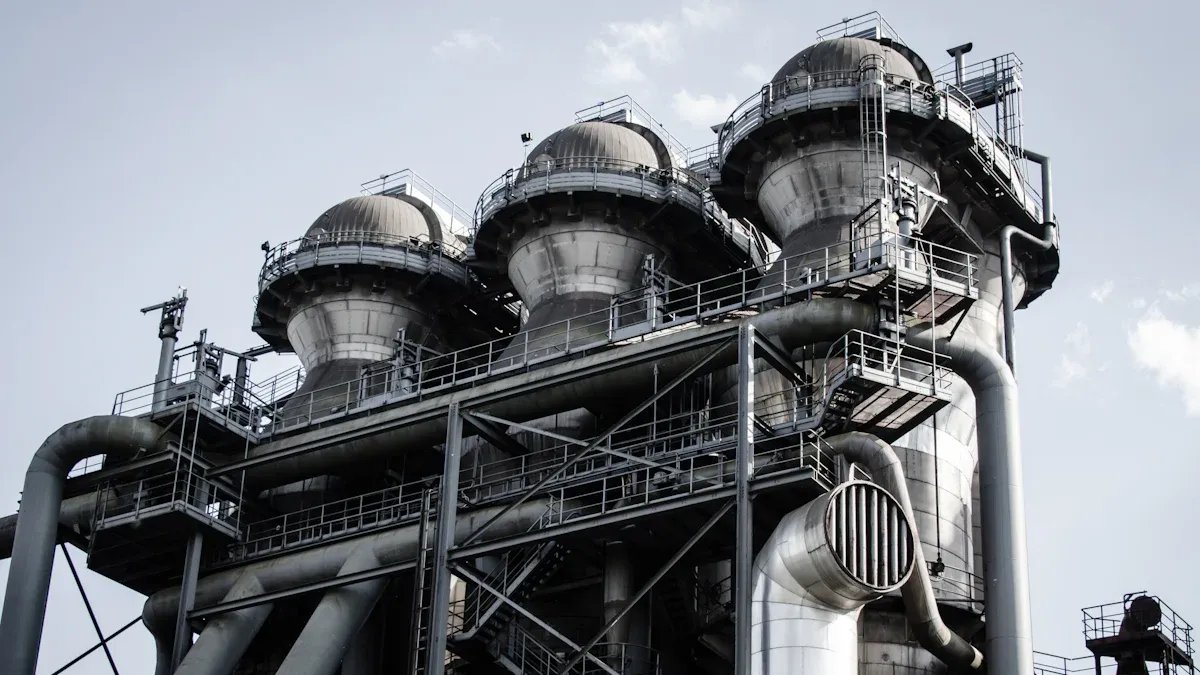
Oil and Gas
The oil and gas industry needs valves for tough jobs. These jobs have high pressure, heat, and harsh fluids. Stainless steel plug valves are popular because they do not rust. They also last longer in rough places. More people now use non-lubricated plug valves. The market may grow from $4.5 billion in 2023 to $7.3 billion by 2032. Both lubricated and non-lubricated plug valves work well with high pressure and harsh fluids. Lubricated types close tightly and need less force to turn. This makes them good for coiled tubing and cementing. Non-lubricated types, like sleeved and lined ones, seal well and do not wear out fast. They are strong against rough slurries. Special coatings and regular care help valves last longer, especially where there is a lot of chloride.
Water and Wastewater
Water plants and sewage systems use plug valves for safety. These valves help control flow and keep workers safe. Double block and bleed plug valves let workers fix parts without stopping everything. The water and wastewater plug valve market may reach $1.92 billion by 2035. This is because people need strong valves for tough fluids and high pressure. Plug valves help save water and protect the environment. They lower emissions and use less energy. These valves also help meet rules for clean water. This makes them important for today’s water systems.
Chemical Processing
Chemical plants deal with strong chemicals and high heat. Plug valves are strong and shut off quickly. This helps control tough jobs and slurries. Metal-seated and lined plug valves last longer and can do more jobs. They turn only 90 degrees, so they leak less and work fast. These things make plug valves a good choice for acids, solvents, and other harsh chemicals.
Food and Beverage
Sanitary plug valves are important in food and drink plants. They have smooth shapes and stainless steel to stop germs. Many valves can be cleaned without taking them apart. Some use steam to clean, saving up to 90% of water. Rotorcheck finds foreign things, making food safer. Many products meet FDA, USDA, and 3-A rules. This means they are safe and easy to track. You can take them apart and clean them often. This is very important for dairy and powder foods.
- Alfa Laval ThinkTop valves help set up faster and use less water.
- Swagelok products meet strict clean rules.
- ISO 2852:1993 stainless steel couplings are used in food plants.
Power and Mining
Power plants and mines need valves for rough slurries and lots of use. Plug valves with special coatings, like Stellite or nickel, last longer. They do not wear out fast. Their design makes them easy to fix and close tightly, even in hard jobs. These valves work with air, gas, slurry, and thick fluids. This makes them useful for many power and mining needs.
Plug valves work with many fluids and in many places. They help keep work safe and running well in different industries.
Installation and Maintenance
Installation Best Practices
Good installation helps the valve work well and last long. There are some important steps to follow:
- Site Assessment and Environmental Considerations: Teams need to look at the place where the valve will go. They should make sure there is enough space. Valves should be kept away from very hot or cold spots. Try to keep them away from things that shake a lot. Doing this helps stop the valve from breaking early.
- Valve Selection and Verification: Workers must check if the valve fits the system. They need to look at flow rates and pressure limits. The valve’s material should match what the system needs. Before putting it in, check things like flow coefficient (Cv) and actuator type.
- Required Tools and Safety Equipment: People should use the right tools, like torque wrenches and alignment tools. Lifting tools help move heavy valves safely. Measuring tools help line up the valve right. Workers must always wear safety gear and use safe tools.
If you follow these steps, the valve will be lined up right and connected well. This helps the valve work its best and keeps things running smoothly.
Routine Maintenance
Doing regular checks keeps valves safe and working right. Teams should:
- Look for leaks, rust, or strange wear on the valve.
- Oil moving parts as the maker says.
- Tighten bolts and connections so nothing leaks.
- Change old gaskets or seals right away.
- Write down all work in a logbook.
A steady maintenance plan helps find small problems before they get big. Clean valves often, especially where things must stay clean or where there are harsh chemicals.
Troubleshooting
Operators sometimes see common problems with valves. Some tools, like Emerson’s ValveLink software and FIELDVUE controllers, can check the valve’s status. They can spot air leaks and show if there is too much friction. These tools help find problems like packing issues, leaks in the actuator, or low supply pressure. Partial stroke tests let you check the valve safely without stopping the process.
- If the actuator moves slowly, it could be from low air or leaks.
- Air leaks at regulators may mean the diaphragm or seal is broken.
- Pressure problems can happen if the diaphragm is cracked or filters are blocked.
- The valve spool can stick if there is dirt or the pilot circuit fails.
- Electrical problems, like coil failures or low voltage, can make the solenoid not work.
Monthly reports and quick alerts help workers find problems fast. This helps plan repairs and stops surprise shutdowns.
Plug Valve vs. Other Valves
Ball Valves
Ball valves have a ball with a hole that turns to let fluid pass. They shut off flow quickly and work best with clean fluids. Ball valves are easy to use because they need less force to turn. This makes them simple to automate. But their shape can trap fluid in small spaces. This trapped fluid can cause rust or damage later. Ball valves can handle high pressure and heat, especially if they have metal seats. They do not need much care for clean jobs. But if the fluid is dirty or gritty, the seats can wear out faster.
| Feature/Aspect | Ball Valve | Plug Valve |
| Reliability | High reliability with tight sealing; less frequent failure especially with clean fluids | Reliable but requires more maintenance; lubricated types need regular greasing |
| Maintenance | Low maintenance; no grease needed; seats may wear with dirty fluids | Requires frequent maintenance; easy to clean; grease needed for lubricated types |
| Fluid Suitability | Best for clean fluids; may wear faster with dirty or gritty fluids | Better for dirty, thick, or corrosive fluids; resists buildup and clogging |
| Pressure Ratings | Handles high pressure (up to Class 800) | Best for low to medium pressure |
| Temperature Ratings | Suitable for high temperatures, especially with metal seats | Limited to moderate temperatures (-29 °C to 107 °C for lubricated types) |
| Operation Torque | Lower torque required; easier to operate | Higher torque; more wear if neglected |
| Weight | Lighter | Heavier |
| Lifespan | Longer lifespan with clean fluids | Can last long if well maintained; may wear faster if neglected |
| Shutoff Speed | Quick quarter-turn shutoff | Quick shutoff; good for flow direction switching |
| Cost | Higher initial cost but better long-term value due to durability | Lower initial cost but higher maintenance costs |
Ball valves work fast and seal well in clean systems. They might not work as well if the fluid is dirty or rough.
Gate Valves
Gate valves use a flat or wedge-shaped gate to open or close the flow. People use them for on and off jobs in big pipes. When open, gate valves do not slow down the flow much. They are not good for adjusting flow or turning on and off a lot. Dirt can get stuck inside and cause leaks or make the valve stick. Fixing them can be hard because they are big and have many parts inside. Gate valves also need more room to put in and use.
- Gate valves are good when you do not need to open or close them often.
- They can handle high pressure and heat.
- They might not seal as tightly as other valves, especially after being used a lot.
Butterfly Valves
Butterfly valves have a disc that turns to control flow. They are light and small, so they fit in tight spaces. You can open or close them quickly with a quarter turn. Butterfly valves are good for big pipes and low pressure. Some fluid can leak through, especially when the flow is slow. They are not the best for thick or rough fluids.
| Feature/Aspect | Plug Valve | Ball Valve |
| Design | Integrated top installation, simple structure, customizable multi-port configurations | Ball with bore, standard two-port design |
| Leakage | Zero leakage shutoff, no fluid trapped in dead spaces | Fluids can remain in dead spaces, causing surface damage |
| Corrosion Resistance | Strong anti-corrosion, suitable for harsh and corrosive media | Less resistant to aggressive fluids in dead spaces |
| Operating Torque | Higher torque required due to surface seal design, increasing actuator costs | Lower torque, easier actuation |
| Maintenance | Non-lubricated versions reduce friction and maintenance, suitable for contamination-sensitive industries | Requires regular maintenance, potential wear on seats and packing |
| Cost | Generally higher initial cost but better life cycle reliability | Lower initial cost |
| Operational Flexibility | Multi-port designs allow flow direction changes, reducing pressure drop and energy consumption | Typically two-port, less flexible |
| Opening/Closing Speed | Quick opening and tight shut-off | Quick operation but potential leakage issues |
| Service Life | Long service life, high reliability | Moderate service life |
Non-lubricated plug valves are easier to keep clean and need less care. This makes them good for places where keeping things clean is important. Multi-port plug valves can change flow direction and save energy.
Picking the right valve means you need to match it to the job. You also have to think about what flows through it and what the rules are. Studies say using the right valve can help flow work better by 30%. It can also cut down on how often things stop by 30%. Experts say you should do these things for the best results:
- Pick valves that fit the pressure, temperature, and media.
- Ask suppliers or experts if your system is hard to figure out.
- Look at datasheets and always put safety first.
If you pick carefully, the valve will last longer and follow the rules.
FAQ
What is the main advantage of a plug valve?
Plug valves shut off flow quickly and seal tightly. They work well with thick or dirty fluids. Many industries like them because they are simple and easy to fix.
How often should a plug valve receive maintenance?
Most plug valves should be checked every six months. If the system is used a lot, check it more often. Regular care stops leaks and helps the valve last longer.
Can plug valves handle corrosive chemicals?
Yes, plug valves with PTFE sleeves or special linings fight rust. Chemical plants use these valves for acids, solvents, and other strong fluids.
Are plug valves suitable for food and beverage applications?
Sanitary plug valves have stainless steel and smooth surfaces. They meet food safety rules. Many types are easy to clean and work with clean-in-place systems.
Tip: Always make sure the valve meets FDA or 3-A rules for food and drink use.


